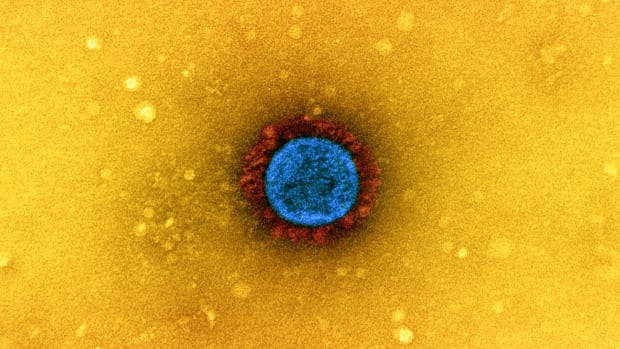Bruce Ballingall grew up playing with his five brothers in the sun. He says they didn’t wear hats or sunscreen and they all ended up with some form of skin cancer.
“Nobody warned me, until it was too late,” said the 75-year-old whose skull is covered with skin grafted from his legs after the removal of melanomas.
He now volunteers with Melanoma Canada and speaks out to warn others. He says he can’t wait for a new mobile cancer screening unit to head to Kamloops, B.C., where his younger brother Brent, 70, has been waiting for almost two years to see a dermatologist.
Skin cancer screening and diagnosis is taking longer in Canada, even as rates of melanoma keep rising due to what experts say is a shortage of dermatologists. Skin cancer can spread and become life threatening within months, but tens of thousands of Canadians face waits of a year or longer for appointments and treatment, according to Melanoma Canada, a charity and advocacy group.
Taking to the road
To help ease long wait times to get screened, some are going directly to the patients.
Melanoma Canada’s mole mobiles launched last spring in Ontario and rolled through 42 communities, screening 4,078 patients and finding 772 suspicious moles or lesions. They’ve started up again this week in Quebec and B.C., with plans to do 25,000 skin checks this year.

The initiative is funded in part by a non-profit started by Brian “Red” Hamilton, a Vancouver Canucks assistant equipment manager who was warned about a cancerous mole by a fan sitting behind him at a Seattle Kraken game in 2022.
Melanoma Canada CEO Fayln Katz told CBC that last year in Ontario, 85 per cent of of patients screened by dermatologists at a mole mobile followed up with a doctor within six months. If anything is found, each patient gets paperwork identifying the type of cancer suspected that they can then take to their doctor.
As of June 1, there were 770 dermatology specialists listed in Canada, according to data compiled by the Canadian Dermatology Association (CDA). There are also 31 new dermatologists beginning their five year training in 2024, and currently 191 dermatology residents and fellows in Canada.
But their numbers haven’t grown much since 2008, when the CDA began warning that a shortage was looming.
The CDA declined interviews this week, but said they were preparing a formal position statement on the topic.
The Dose19:31How can I prevent and detect melanoma?
Melanoma is the deadliest of all skin cancers, and rates of melanoma are growing in Canada. But melanoma is one of the most preventable cancers out there. Dermatologist Dr. Julia Carroll shares what you need to know. For transcripts of this series, please visit: https://www.cbc.ca/radio/podcastnews/the-dose-transcripts-listen-1.6732281
Delays in diagnosis mean skin cancer can spread
That lack of skin specialists can hurt patient outcomes, says Philippe Lefrançois, a dermatologist at the Jewish General Hospital and skin cancer researcher at the Lady Davis Institute in Montreal.
According to the Canadian Cancer Foundation, one in every three cancer diagnoses in the world is skin cancer, most of it caused by ultraviolet (UV) radiation. Of the more than 80,000 cases of skin cancer diagnosed in Canada each year, the foundation says 5,000 are melanoma, the deadliest form of skin cancer.

Experts say melanoma is most common in males over the age of 49 and in young adults. According to Melanoma Canada, undetected melanoma can spread quickly and kills an average of three Canadians each day.
Lefrançois says it doesn’t have to be this way, because melanoma is preventable, and when found early, it can be cured. Too often, he told CBC, the cases his office sees are advanced and require more than a standard treatment.
“And this is because of, you know, lack of access to dermatologists.”
He said the shortage of skin specialists has been exacerbated by poor pay, limited residencies, retirements and the fact that many end up in much higher paying cosmetic practices.
“If I do a skin check, I’m paid less than a surgical oncologist … doing the same thing,” Lefrançois said.
In Quebec, he says dermatologists doing such checks in their offices are paid just $26. In a hospital setting, he said an oncologist would get $70, while dermatologists working at private medical spa clinics could charge between $250 to $350 for the same service.
Maureen Meehan, a London, Ont., resident who was diagnosed with Stage 3 melanoma in 2017 and had successful surgery, shares how to check moles in areas you can’t reach and why you shouldn’t take the threat of skin cancer lightly.
Uneven distribution of dermatologists
Eric McMullen, 24, an incoming resident at the University of Toronto’s school of medicine, recently published a study that suggested dermatologists are too unevenly distributed across the country.
For example, according to the CDA’s data, there are 290 licensed dermatologists in Ontario and 96 in B.C., but just 12 in Saskatchewan and one in Prince Edward Island.
“A lot of dermatologists are working in big cities and very, very few are working in rural and remote areas of Canada,” he said.
The study noted that creating more telehealth options or providing dermatologists with incentives to practice rurally may help.








